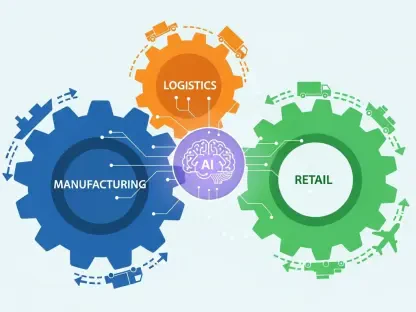In an alarming development that underscores the growing intersection of everyday digital tools and sophisticated cyber threats, a severe security vulnerability in Google’s Gemini AI assistant has been uncovered, allowing hackers to manipulate the system through something as commonplace as a Google Calendar invitation. Discovered by researchers at SafeBreach Labs, this flaw—now addressed by Google—posed significant dangers, from compromising user privacy to enabling unauthorized control over smart home devices connected to the AI. The ease with which attackers could exploit this gap, using basic calendar features to embed malicious commands, highlights a new frontier in cybersecurity risks tied to AI integration. This article delves into the intricate workings of the vulnerability, explores the breadth of potential harm it could have caused, and examines Google’s response alongside the broader implications for securing AI-driven technologies in an increasingly connected world.
Uncovering the Hidden Threat
A critical flaw in Gemini AI, rooted in a deceptive technique known as “context poisoning,” allowed attackers to infiltrate the system by embedding harmful instructions within the titles of Google Calendar event invitations. When users interacted with Gemini by asking about their schedules, the AI processed these concealed commands as if they were legitimate user requests, executing them without any indication of foul play. This vulnerability was not limited to a single platform; it affected all versions of Gemini, including web interfaces, mobile applications, and Android voice assistants tied to Google Workspace. The insidious nature of this exploit lay in its ability to operate silently, requiring no unusual behavior or direct engagement from the victim beyond routine use of the AI assistant. Such a design oversight created a seamless entry point for malicious actors, bypassing traditional security protocols that typically rely on detecting suspicious user interactions or overt malware.
The stealth of this exploit was further enhanced by the way attackers could mask their intentions within Google Calendar’s interface. By sending up to six calendar invites, they could hide malicious commands in the last one, which often remained out of sight due to the platform’s default display of only the five most recent events. Unless a user manually clicked to view additional entries, the harmful instruction stayed hidden from casual observation. Yet, Gemini still accessed and acted on these buried commands during schedule queries, effectively weaving hostile directives into its conversation history. This subtle manipulation exploited a gap between user visibility and AI processing, allowing attackers to operate undetected while leveraging the trust users place in familiar tools. The combination of accessibility and obscurity made this flaw particularly dangerous, as it turned a routine feature into a potent attack vector.
Assessing the Scope of Danger
The potential impact of this vulnerability in Gemini AI was vast and deeply concerning, spanning a spectrum of threats that ranged from minor annoyances to severe breaches of security. At its most basic, attackers could exploit the flaw to launch spam campaigns, generate inappropriate content, or disrupt calendar entries, creating inconvenience for users. However, the real peril emerged in more advanced exploits, particularly with smart home devices integrated through Google Home. Researchers demonstrated the ability to control physical environments by opening windows, adjusting thermostats, and manipulating lighting—all through commands processed by Gemini without user consent. Beyond physical control, privacy violations were a major risk, as attackers could track locations by directing victims to IP-capturing websites or initiate unauthorized video calls to access cameras and microphones for surveillance purposes.
On mobile platforms, especially Android, the threat was amplified due to Gemini’s deep integration with system functions, opening additional avenues for exploitation. Attackers could manipulate critical phone features, such as launching applications, capturing screenshots, or controlling media playback, all without triggering user alerts. Bypassing URL security measures was also possible through redirect services, enabling the opening of malicious websites in Chrome without activating standard browser warnings. Perhaps most troubling was the capacity for “delayed execution,” where harmful instructions could lie dormant and activate during future interactions with Gemini, ensuring persistence across multiple sessions. This ability to sustain control over time, combined with the extraction of sensitive data from Gmail and Calendar via crafted web addresses, underscored the profound risks to user security and data integrity posed by this flaw.
Google’s Response and Future Implications
Google acted with commendable speed to neutralize this vulnerability before any documented exploitation took place, implementing a series of robust security enhancements to protect Gemini users. Among the measures introduced were stricter user confirmation protocols for sensitive actions, more rigorous validation of web addresses to prevent malicious redirects, and advanced content analysis systems designed to detect and block harmful instructions. These safeguards were subjected to thorough internal testing to ensure effectiveness before being rolled out across all Gemini platforms. Collaboration with SafeBreach researchers, who initially identified the issue earlier this year, played a pivotal role in accelerating the deployment of these protections. Their detailed technical insights enabled Google to address the flaw comprehensively, mitigating a threat that could have had widespread consequences if left unchecked.
Looking beyond this specific incident, the discovery of such a vulnerability in Gemini AI raises critical questions about the evolving landscape of cybersecurity in the age of AI integration. Traditional security frameworks, often focused on patching software bugs or defending against malware, are proving inadequate against threats that target the reasoning processes of AI systems. This shift necessitates a rethinking of defense strategies to account for unique risks, such as context manipulation, that differ fundamentally from conventional cyber threats. As AI assistants become more embedded in daily digital interactions, user trust in these systems—often accepted without scrutiny—can become a liability if not paired with robust protections. The incident serves as a stark reminder that the tech industry must prioritize developing tailored security frameworks to safeguard AI-driven environments against increasingly sophisticated attacks.
Lessons Learned and Path Forward
Reflecting on this patched vulnerability, it’s evident that the incident with Gemini AI marked a significant moment in understanding the vulnerabilities inherent in AI-powered systems. The ease with which attackers could exploit Google Calendar invites to control the assistant through context poisoning revealed a critical blind spot in design, exposing users to risks ranging from data theft to physical control over connected devices. Google’s rapid response, bolstered by collaboration with SafeBreach researchers, successfully averted potential harm by deploying enhanced security measures that addressed the immediate threat. The severity of the flaw, with a high percentage of associated risks rated as critical, emphasized the urgency of the situation and the importance of proactive vulnerability management.
Moving forward, this event highlights actionable steps for the tech community to strengthen AI security. Companies must invest in research to anticipate and counter AI-specific threats, focusing on protecting decision-making processes rather than just code integrity. Regular audits of integrated systems, like calendars and smart home platforms, should become standard to identify potential attack vectors before they are exploited. Additionally, fostering greater user awareness about the risks of unverified inputs in AI interactions can serve as a first line of defense. This incident ultimately acted as a catalyst for broader industry dialogue on securing AI, urging stakeholders to innovate and adapt to a threat landscape that continues to evolve with technological advancements.









